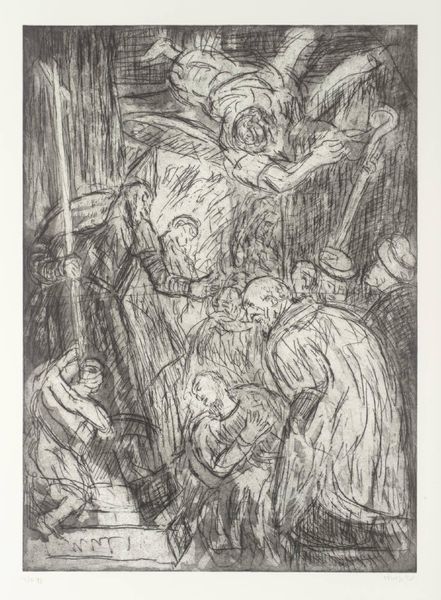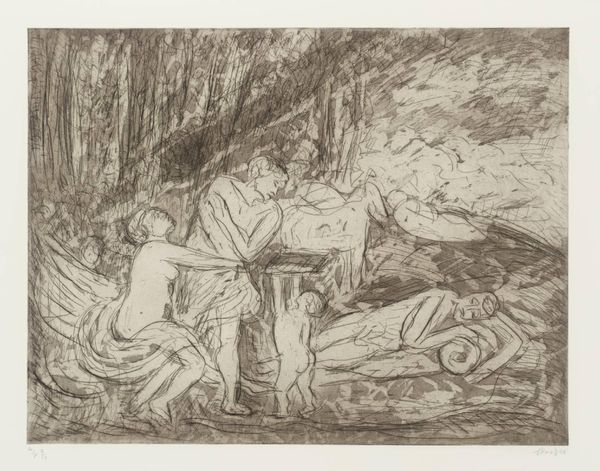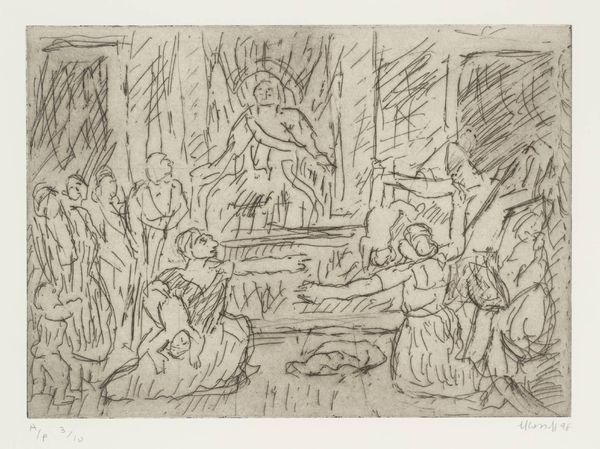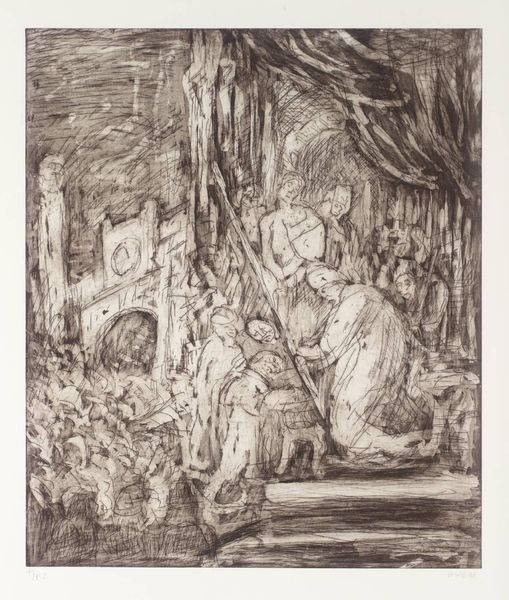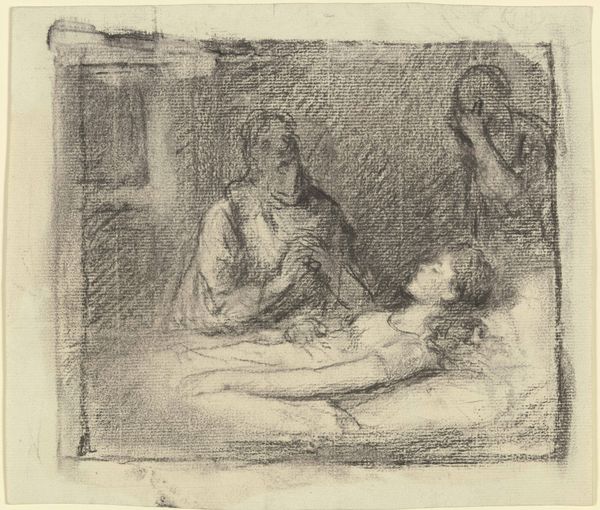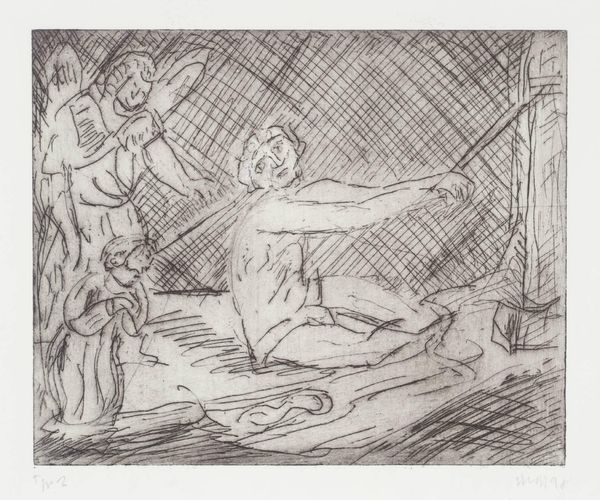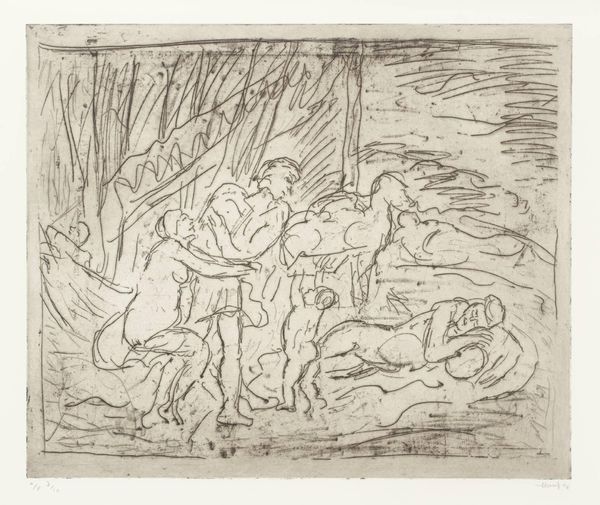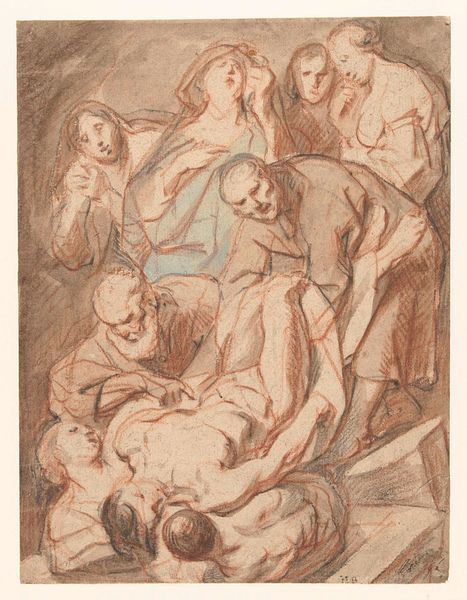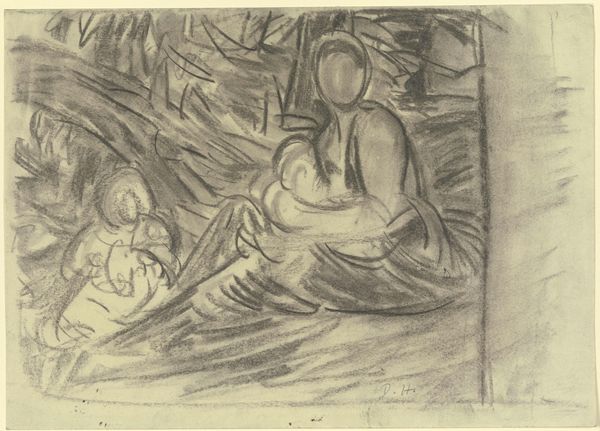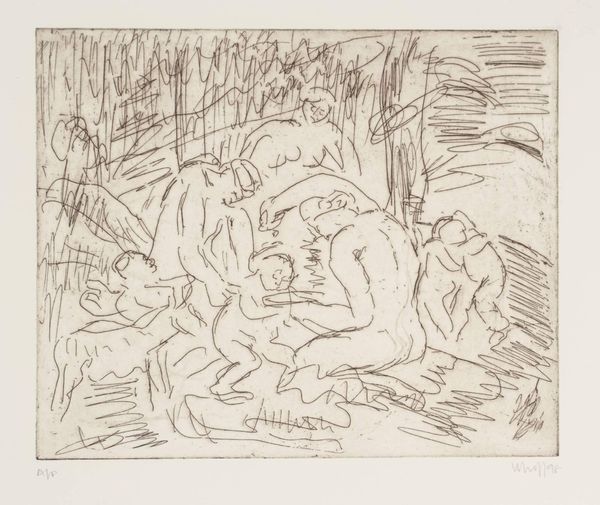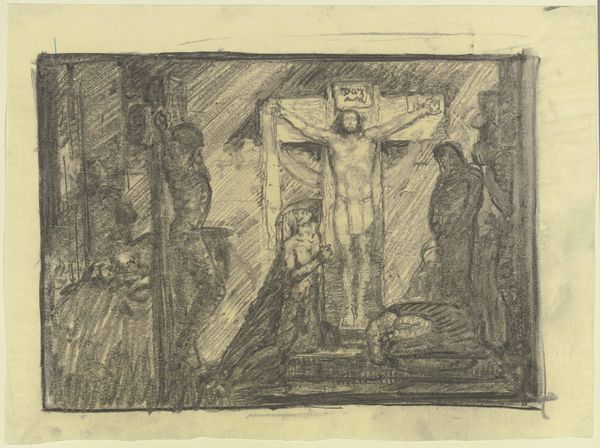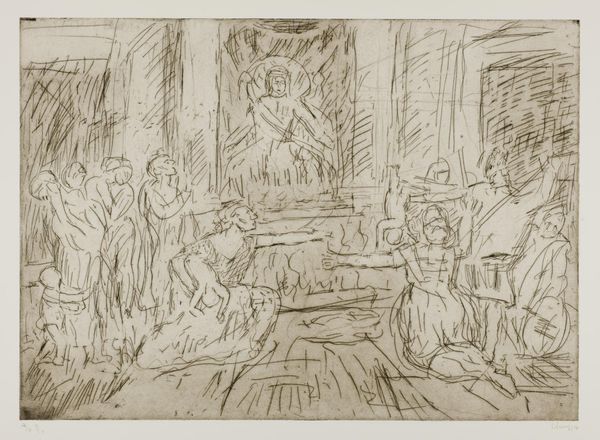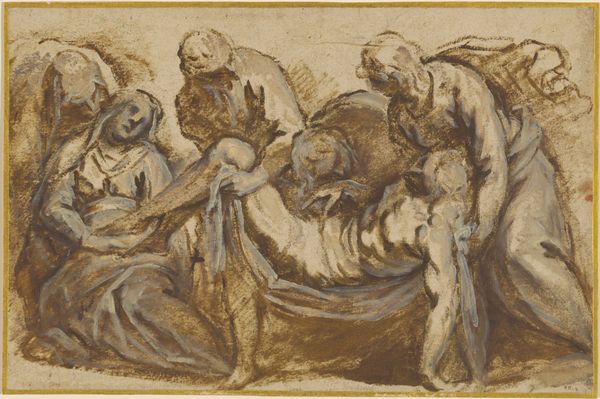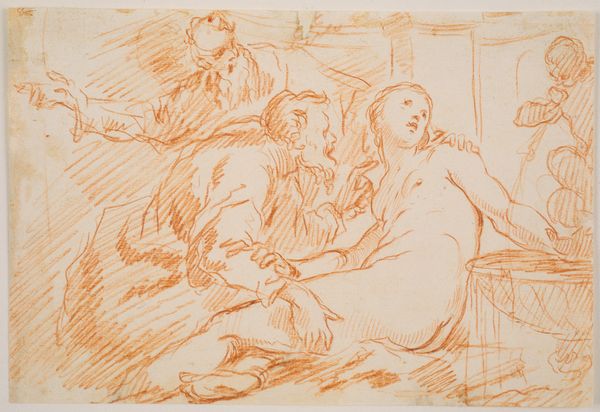
Copyright: © Leon Kossoff | CC-BY-NC-ND 4.0 DEED, Photo: Tate
Curator: Here we have Leon Kossoff's intaglio print, "The Lamentation over the Dead Christ". Editor: It’s overwhelmingly somber. The stark lines and monochromatic palette evoke a real sense of grief. Curator: Kossoff's treatment of the subject matter transcends the biblical narrative. Notice how his rough etching technique imbues it with a raw, visceral quality. It reminds us of the labor involved in its creation. Editor: Yes, but look at the composition. The huddled figures, the almost claustrophobic space—it amplifies the feeling of despair. The textures alone create a palpable emotional landscape. Curator: And consider the social implications. Kossoff, deeply affected by the devastation of World War II, reframes the Lamentation. The print speaks to broader themes of loss and suffering, resonating even today. Editor: True, but the power is in the formal elements. The repetition of line, the contrast between light and dark—these visual cues guide our emotional response. Curator: A poignant reflection on sorrow, seen through a lens of lived experience. Editor: Indeed, a masterclass in conveying emotion through form.
Comments
tate 6 months ago
⋮
http://www.tate.org.uk/art/artworks/kossoff-the-lamentation-over-the-dead-christ-1-p11721
Join the conversation
Join millions of artists and users on Artera today and experience the ultimate creative platform.
tate 6 months ago
⋮
This print is one of many etchings executed by Leon Kossoff in response to, and literally in the presence of, oil paintings by old masters; in this case The Lamentation over the Dead Christ, 1656-8, by Nicolas Poussin (1594-1665), owned by the National Gallery of Ireland, Dublin. Tate owns two prints by Kossoff after this Poussin painting (Tate P11721-2). The artist’s ability to explore a number of separate responses while making drawings and prints from a single subject is illustrated in these etchings. This version was printed in an edition of twenty with ten artist’s proofs; Tate owns number three of the artist’s proofs.
